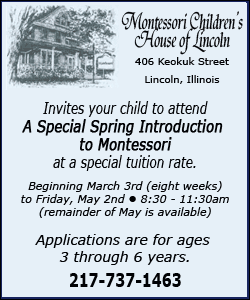|
 There's news for women, too: A new computerized tool uses more than bone-density tests to predict who is at highest risk of breaking a bone in coming years
-- by adding in such important risk factors as whether a parent ever broke a hip. There's news for women, too: A new computerized tool uses more than bone-density tests to predict who is at highest risk of breaking a bone in coming years
-- by adding in such important risk factors as whether a parent ever broke a hip.
It's an effort to better target who really needs treatment and who can safely skip it, even before someone's bones become thin enough to be officially labeled an osteoporosis patient.
And it promises a major shift in bone care.
"You treat the people who have high risk, and you would reassure the women at low risk and ask them to come back for a recheck in a few years," explains Dr. Ethel Siris of Columbia University and president of the National Osteoporosis Foundation, which issued the new guidelines last week.

Moreover, the new work stresses that a disease long associated with little old white ladies actually can strike anyone as they age. The biggest change: The NOF guidelines recommend a bone-mineral density X-ray test for all men 70 and older, just like women 65 and older have long been urged to get. (Men and women may need the tests sooner if other factors put them at high risk.)
"There's a recognition more so now than in the past that men are at risk," says Dr. Jay Magaziner of the University of Maryland medical school, who has long researched hip fractures
-- osteoporosis' most-feared break.
Don't misunderstand. Postmenopausal women are still at greatest risk of osteoporosis, when bone-strengthening estrogen plummets. But a quarter of hip fractures occur in men, and as men live longer, the number who break a hip is steadily rising, Magaziner told a recent meeting of the American Academy of Orthopaedic Surgeons.
Screening men "as we do with women can have some real payoffs in terms of prevention," he says.

Another conundrum: More than half of fractures due to bone loss occur in people whose bones are thinning but aren't quite thin enough to be labeled osteoporosis. They're in a gray zone known as osteopenia.
In the U.S. alone, some 10 million people have osteoporosis but 34 million are estimated to have osteopenia. With the population rapidly aging, the government estimates half of Americans over 50 will be at risk of fractures from too-thin bones by 2020.

The World Health Organization funded a Web-based tool called FRAX, unveiled last week, that helps calculate the odds of a hip, wrist, shoulder or spine fracture within the next 10 years for anyone 40 or older in nine different countries
-- regardless of whether they have full-fledged osteoporosis or just low bone mass.
Both geography and ancestry matter for bone health. Consider differences such as diet, exercise and exposure to Vitamin D-making sunlight, and odds of a break differ dramatically from China and Japan, to France and Spain, and on to the highest-risk U.S. and Sweden. Here, white women have the highest risk and black women the lowest. FRAX lets users take all that into account.
[to top of second column] |

How? Researchers at Britain's University of Sheffield used data from 60,000 people in developed countries
-- where life expectancy is long enough for osteoporosis to be an issue -- to determine factors that play the biggest role in an individual's odds of thinning bones as they age.
Breaking a bone during adulthood that's not the result of, say, a bad car crash is one risk factor. A parent who broke a hip suggests a genetic risk. Smoking also thins bones, as does heavy alcohol consumption and long-term use of steroid-containing medicines.
Plug in a patient's score from a bone-density measurement of the hip for the final calculation.
That number alone doesn't say whether someone needs bone-building treatment. So in the U.S., the National Osteoporosis Foundation went a step further. It used the FRAX predictions to update guidelines on who needs bone-density testing, and to calculate when fracture risk becomes high enough that bone-building drugs would be cost-effective.

In addition to a routine bone check for older men, the guidelines recommend:
-
Treat postmenopausal women and men 50 and older who have thinning bones, but not osteoporosis yet, if they have at least a 20 percent risk of any major fracture in the next decade, or at least a 3 percent risk of a hip fracture.
-
Check for osteoporosis risk factors in postmenopausal women and men 50 and over, to see who needs a bone test before their senior years.
-
A bone test for anyone who has any type of fracture after age 50, or who has conditions associated with bone loss, such as rheumatoid arthritis.
-
For adults over 50, 1,200 milligrams a day of calcium and 800 to 1,000 international units a day of Vitamin D, more D than the government recommends.
-
Do regular weight-bearing and
muscle-strengthening exercise.
___
On the Net:
FRAX Web site: http://www.shef.ac.uk/FRAX/
[Associated
Press; By LAURAN NEERGAARD]
Lauran Neergaard covers health and medical issues for The Associated Press in Washington.
Copyright 2008 The Associated
Press. All rights reserved. This material may not be published,
broadcast, rewritten or redistributed.
 |